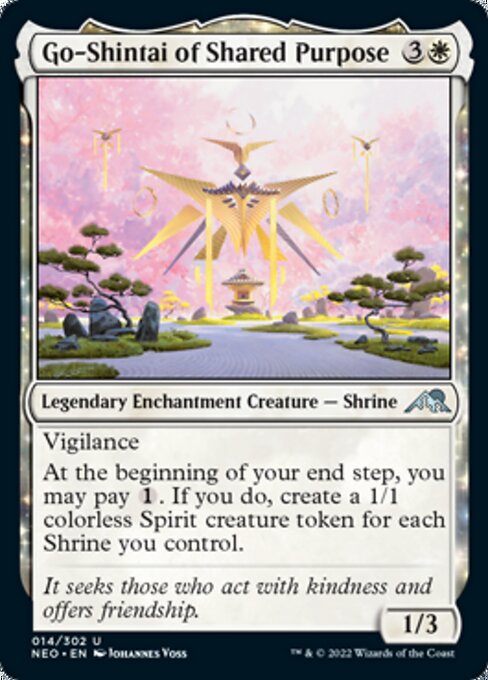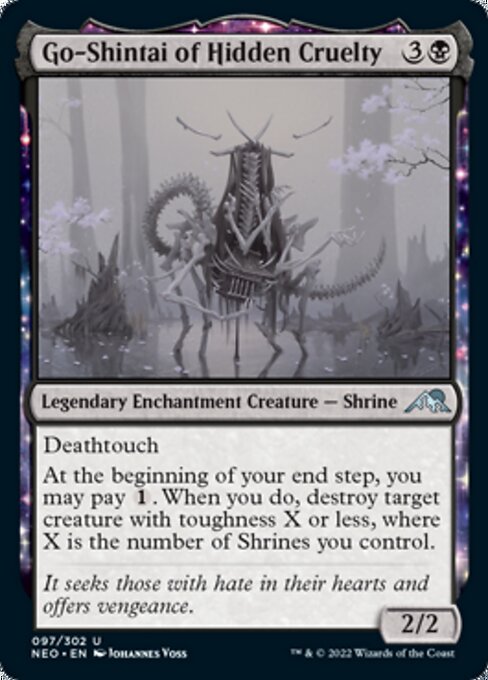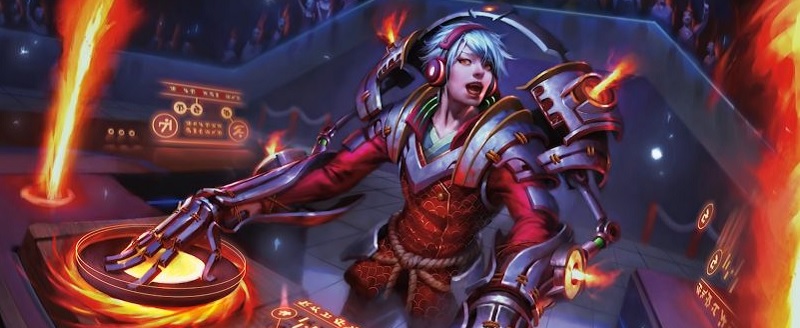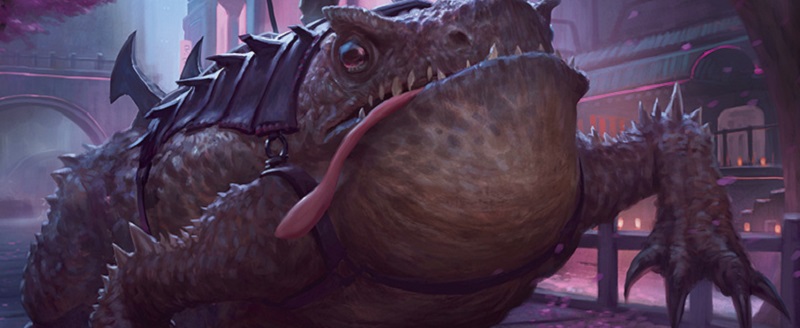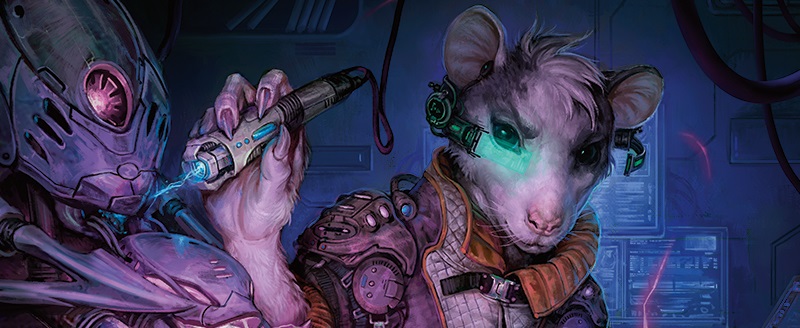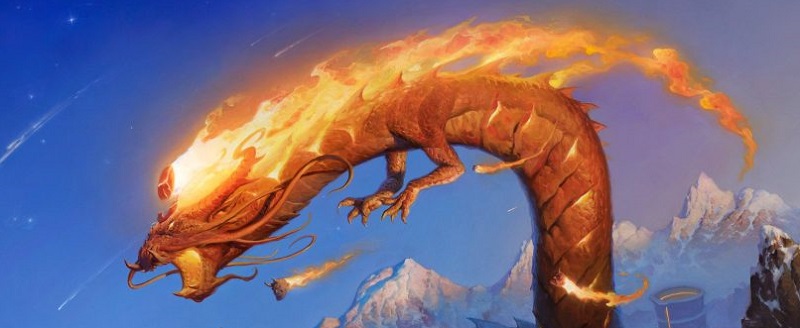Introduction
Welcome to Part 1 of our Kamigawa Neon Dynasty Draft Guide. Here we take a detailed look at the new and returning mechanics for Magic the Gathering’s latest set.
Available on Magic Arena in early February, this is MTG’s first futuristic limited experience. Blending themes from Japanese folklore with speeding vehicles and pulsing technology, Kamigawa promises to be a wild ride!
Whether you prefer drafting or sealed deck, online or paper play - don’t worry, we've got you covered. This guide will take you through new mechanics such as Channel, Reconfigure and Completed as well as refreshing your knowledge of returning ones like Ninjutsu, Vehicles and Shrines.
Without further ado let's get into the mechanics of Kamigawa!
Channel
Introduced in Saviours of Kamigawa, channel allows you to discard a card (by paying the channel cost) in exchange for an instant speed effect. The mechanic is similar to cycling but instead of drawing a card you get an effect immediately. This simple mechanic can smooth your hand due to its inherent duality. Choice is king when it comes to limited play and having the option to channel a card will always be a plus.
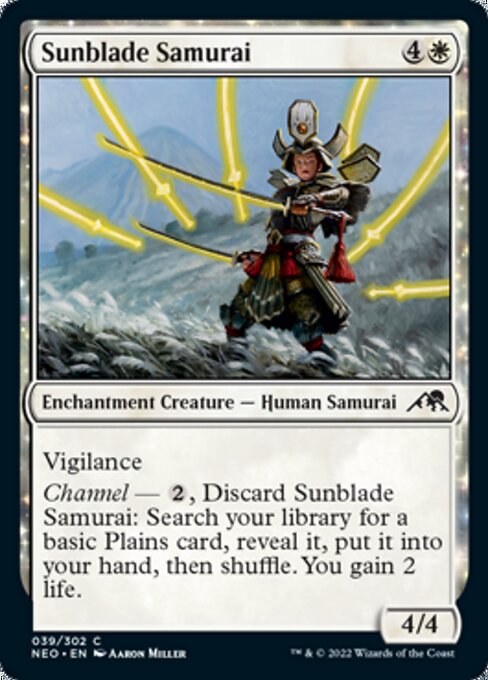
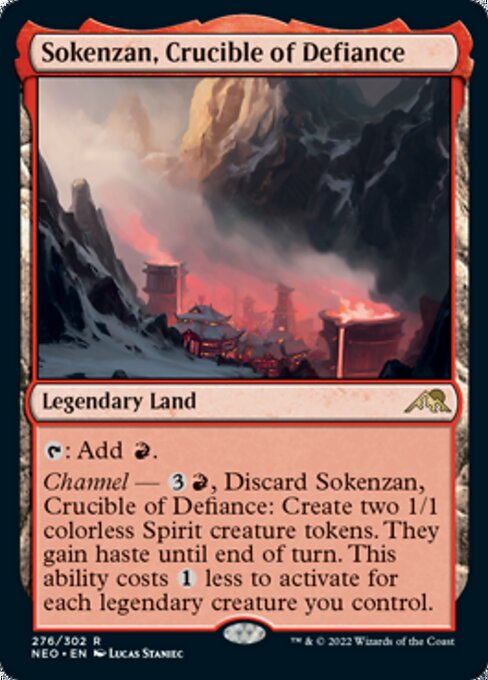
Take a look at Sunblade Samurai. This can be hardcast for five mana or channeled for two. Here channel mitigates the risk of playing a five drop since you can search up a plains when you're short on lands. At the other end of the spectrum Sokenzan, Crucible of Defiance is a land that can be channeled in exchange for two bodies. Although this card is rare, it's exactly the kind of mechanic that limited players love. One that provides options and reduces the risk of flood.
Reconfigure
Reconfigure is a brand new keyword which allows creatures to be used as equipment. Cards with this ability enter the battlefield as creatures and remain that way until the reconfigure cost is paid. At this point the card may be attached (at sorcery speed) to another creature. Whilst attached the reconfigure card is no longer a creature and functions as an equipment. If the equipment becomes unattached it reverts back to being a creature until the reconfigure cost is paid again.
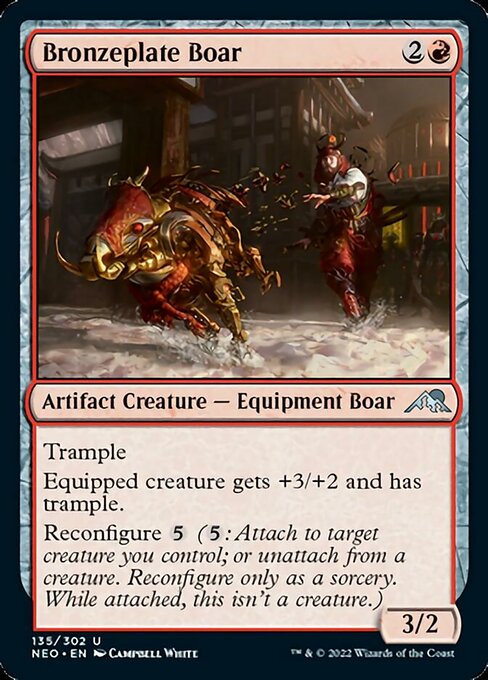
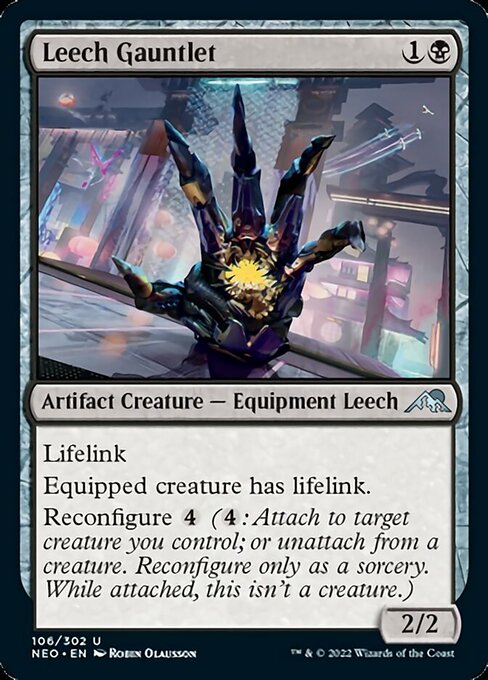
Reconfigure can also be used to un-attach the equipment. This allows you to turn the card back into a creature without the host leaving the battlefield. There may be strategic value in doing this, not least because the reconfigure card will be untapped when it returns to the creature state. This is because equipment does not tap when a creature wearing it does.
This mechanic provides late game value without slowing down a player's board development in the crucial early turns. Normal equipment can be strong in the late game but is often too slow to be useful in the early stages of the game when affecting the board is a must. Reconfigure offers a solution to this problem by providing a creature during the early turns as well an equipment later on.
Modified
Modified is a brand new keyword. It’s a way of referencing creatures which are equipped, enchanted or have counters on them. Across the set there are many cards which confer a bonus if you control a modified creature. For example, Heir of the Ancient Fang enters the battlefield with a +1/+1 counter on it and Ambitious Assault allows you to draw a card.
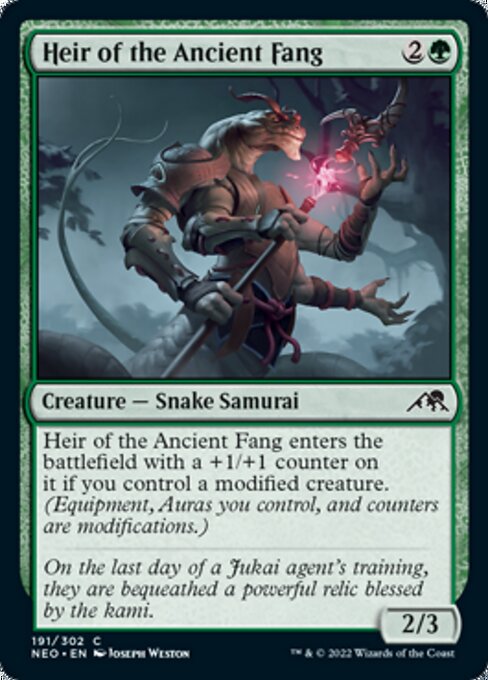
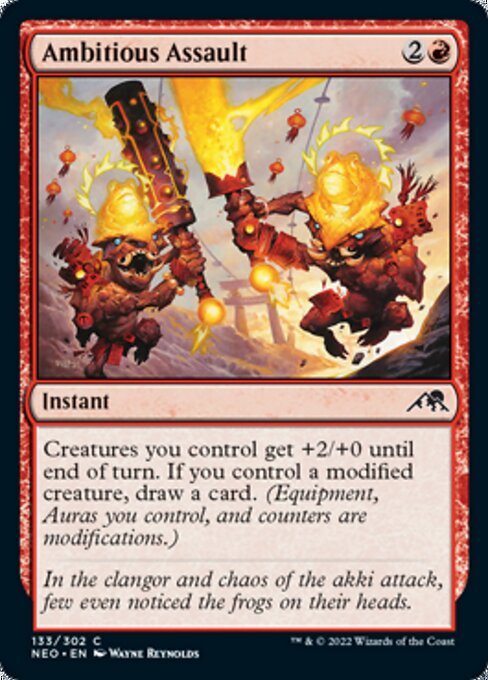
It’s a pretty straightforward mechanic but one that will reward solid drafters with incremental advantage as they modify their creatures with equipment, auras and counters. Note that auras controlled by your opponent will not grant your creatures modified although counters will, regardless of which player placed them.
Compleated
This new keyword appears on only one card in Kamigawa Neon Dynasty. That card is no slouch however, take a look at Tamiyo, Compleated Sage, a powerful planeswalker at mythic rare.
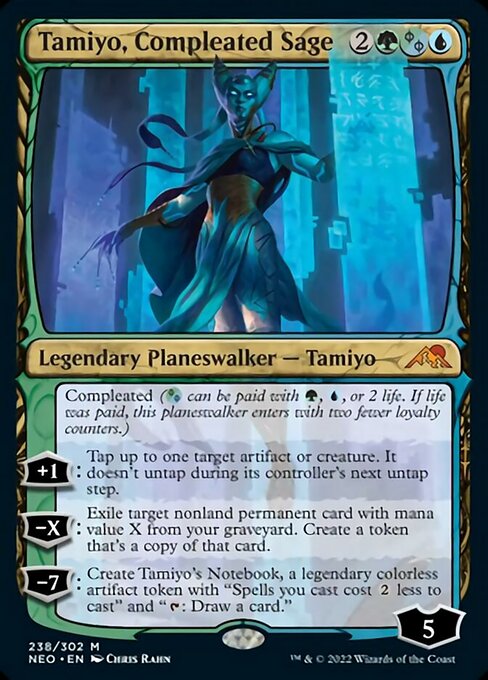
This legendary card is in the Simic colors and includes a hybrid mana symbol in the casting cost. Compleated allows the hybrid mana cost to be paid for with 2 life. Mana that can be paid for in this way is usually referred to as ‘phyrexian mana’. The difference here is that Tamiyo enters the battlefield with two fewer loyalty counters if the completed cost is paid.
Ninjutsu
Ninjutsu is a returning mechanic first introduced in Betrayers of Kamigawa. The mechanic is exclusive to cards with the creature type ninja. Originally it was present only on black and blue cards, however Kamigawa Neon Dynasty is introducing several ninjutsu cards in green and one in white.
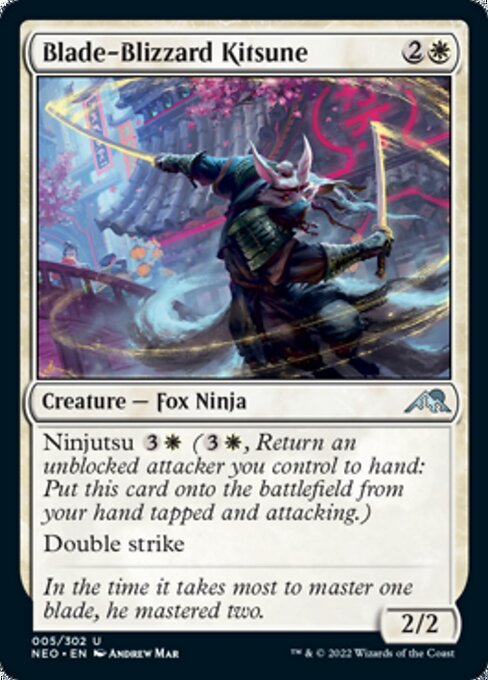
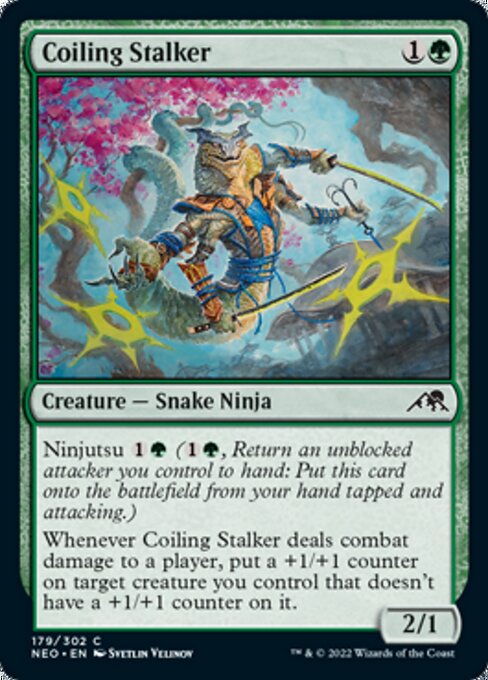
Ninjutsu can only be activated when the card is in your hand. It’s similar in this way to cycling or channel (which is also present in this set). In order to activate a ninjutsu ability you must control an unblocked attacking creature. On activation, the unblocked attacker is returned to your hand and the ninja is placed on the battlefield tapped and attacking.
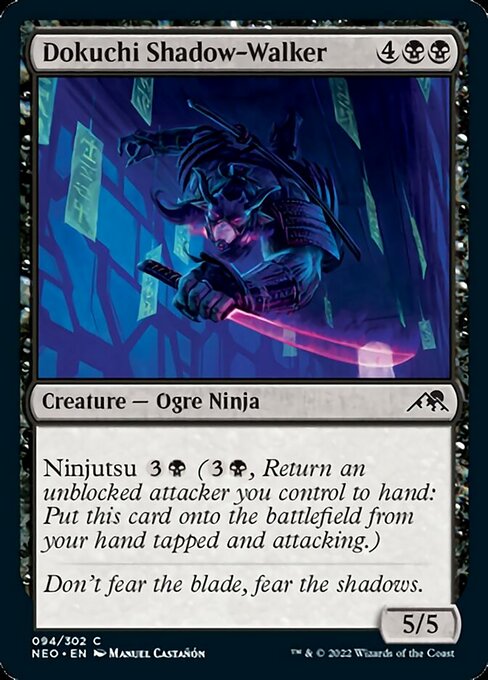
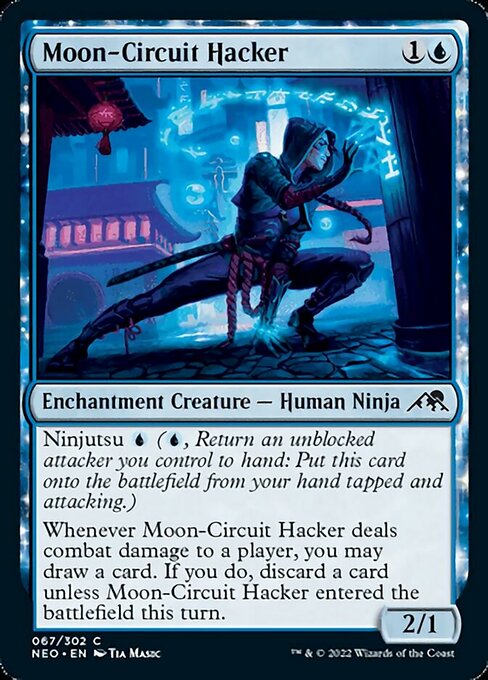
This mechanic is powerful for a variety of reasons. Bringing creatures into play at instant speed is clearly sweet and the cost reduction compared to hard casting can be significant. In addition to this, many ninjas have abilities which trigger when they damage a player, a scenario which ninjutsu itself enables. Playing around open mana can be tricky when facing a ninja deck and it's easy to make a costly mistake.
Vehicles
Vehicles were first introduced to MTG during Kaladesh. They are artifacts with power and toughness although they are non-creature unless ‘crewed’ by a player. They have a bronze and gray card frame and a bronze color stats box which sets them apart visually from creatures.
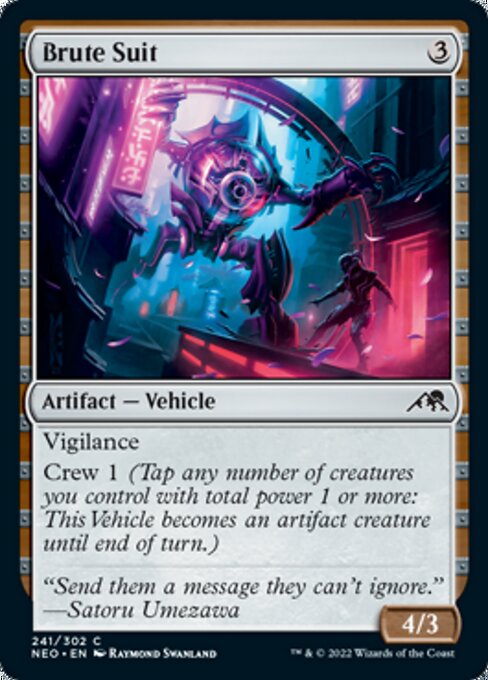
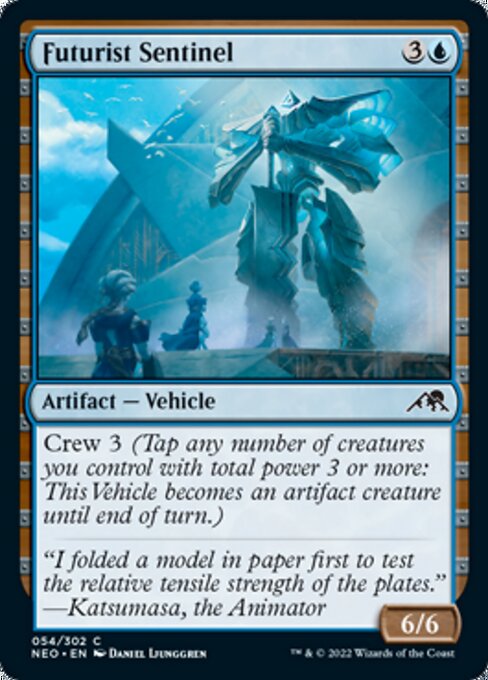
Each vehicle will inform you of how it can be crewed. Typically the ‘crew cost’ is a number giving the total power of creatures to be tapped. For instance a crew cost of 2 can be met by tapping a single 2 power creature. Alternatively you can tap two creatures with power 1 or you can ‘over crew’ by tapping a creature with power 3 or greater. Once a vehicle is crewed it becomes a creature until the end of that turn and can attack and block as needed.
One advantage of vehicles is that they provide a pseudo-haste effect for creatures cast later in the game. As each creature hits the battlefield they are able to crew the vehicle (since summoning sickness does not prevent creatures from crewing). This allows a tempo advantage to be gained from creatures which would otherwise be unable to participate in an attack. Vehicles also have some inherent protection from sorcery speed removal since many spells can’t target them in the noncreature state.
The obvious drawback to vehicles is the need to constantly crew them. As such the crew cost is often the deciding factor when evaluating a vehicle’s power level, put simply the lower the better.
Sagas
Sagas are a returning mechanic that many players will be familiar with. First introduced in Dominaria they are widely considered to be a flavor win. Each saga tells a story split over several chapters. As the story unfolds each chapter triggers, providing powerful effects for the player who controls it.
In Kamigawa Neon Dynasty sagas are back with a twist - for the first time ever we have sagas printed on double sided cards! Each card of this type has a saga on the front and a creature on the back. When the final chapter is triggered the saga is exiled and then returns to the battlefield transformed.

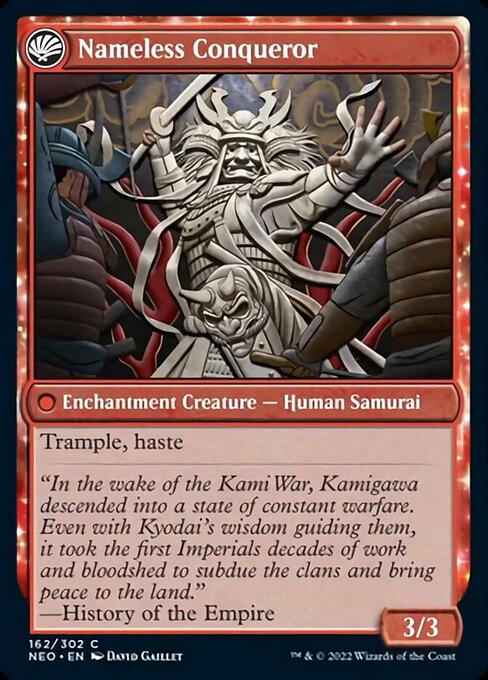
Experienced players will be used to the idea of ‘bouncing’ a saga back to their hand before the final chapter resolves. This little trick allows the card to be recast later in the game and has always been a great value play. Unfortunately this won't work quite as well in Kamigawa Neon Dynasty, since bouncing the saga will prevent the transformation and leave you without a creature.
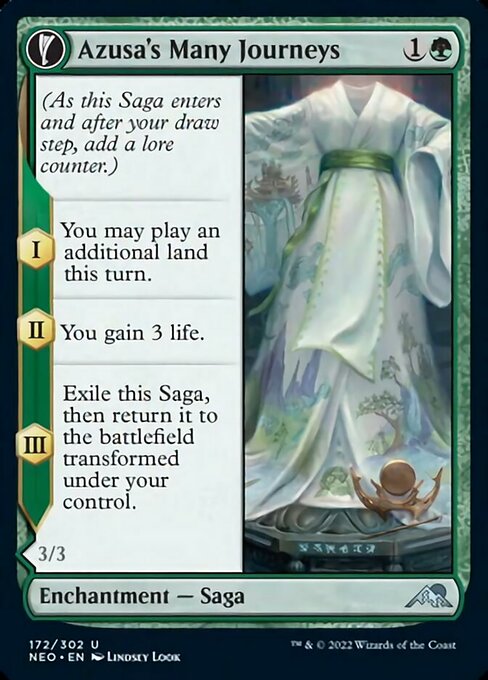
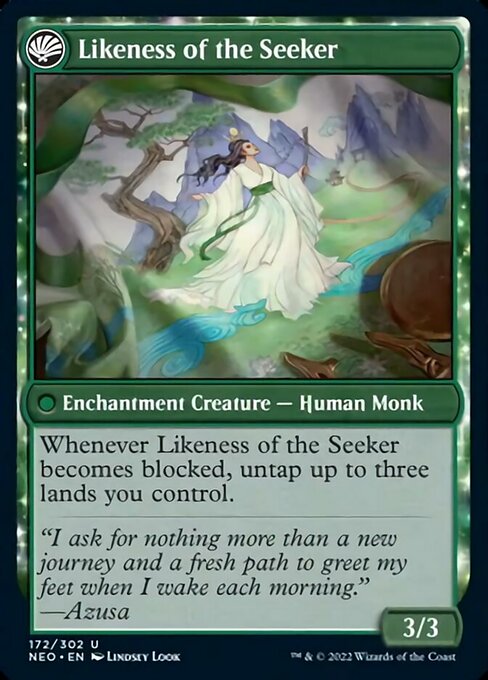
Shrines
Shrine is an enchantment subtype which was first introduced in Champions of Kamigawa. The keyword itself doesn’t carry any rules text but your shrines get stronger for each other one you control. This card type is typically printed in a cycle consisting of one in each color and Kamigawa Neon Dynasty doesn’t deviate from that tradition. The set does shake things up though - as the shrines printed here are also creatures!
